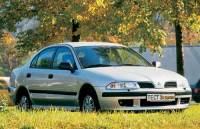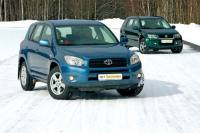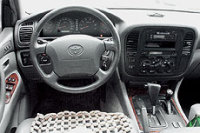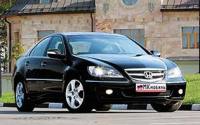Mitsubishi Carisma: Direct Communication
 The engine is trained to manage the process of mixing and burning, even after closing the valves. In economy mode, it is able to work on ultra-poor air-fuel mixture, providing gasoline savings, but, if necessary, it develops high power and torque, working on enriched mixtures in power mode. There are three options for fuel injection. When driving at a constant speed of up to 120 km / h, the GDI engine (Gasoline Direct Injectiоn) works on ultra-poor mixtures (air-fuel ratio 30-40: 1). With active driving and at high speeds goes into power mode (ratio of 14.7: 1).
The engine is trained to manage the process of mixing and burning, even after closing the valves. In economy mode, it is able to work on ultra-poor air-fuel mixture, providing gasoline savings, but, if necessary, it develops high power and torque, working on enriched mixtures in power mode. There are three options for fuel injection. When driving at a constant speed of up to 120 km / h, the GDI engine (Gasoline Direct Injectiоn) works on ultra-poor mixtures (air-fuel ratio 30-40: 1). With active driving and at high speeds goes into power mode (ratio of 14.7: 1).
Well, at maximum impact, the fuel is supplied in two stages: first, a small dose is injected at the intake stroke to cool the air, then at the compression stroke, the main part of the fuel enters the mixture to 12: 1.
In Europe, GDI engines have been installed on Mitsubishi-Karizma since 1997, but the vehicles with them were not delivered to Russia. And here “Charisma 1.8 GDI” appeared with us. Unlike the less powerful 1.6-liter fellows, this car will be offered only in the expensive performance “Advance”. In addition to the list of additional equipment, this “Karizma” is distinguished by a box with a different reverse gear switching algorithm and a small green window in the lower right corner of the instrument cluster with the words “GDI ECO”.
Well, it’s time to go. The engine responds to turning the key in the ignition lock everyday and familiar – no new sounds or, even more, vibrations. I try to smoothly move. At some point in the light tremor that ran through the car, it seemed that there were not enough good “bottoms” – there are more than we would like to act with an accelerator. However, further experiments do not reveal any inconvenience.
Okay, let’s see what will happen when moving along the route, but for now – refueling (gasoline “95th”) and full “reset” the trip computer, in order to fix the real fuel consumption.
In the city, “Charisma” is a very convenient car: high-powered with stable responses to changes in fuel supply. The nature of the motor is very smooth, and only to 4500-5000 rpm, he begins to show temperament. Even in the ragged rhythm of driving through the streets, the green light “GDI ECO” often lights up – to switch to economical traffic, you only need to push the accelerator a little more smoothly and gently. Outside the city, the economy mode begins to prevail altogether, and it almost does not depend on the intensity of accelerations. Slowly inflating the pace, forcing the motor to more often go into power mode. And here everything is very good: the engine with pleasure “swallows” the correct working mixture, easily and naturally spinning up to maximum speed. Pleasant “pickup”, outlined in the city, sounds in full force in the operational space.
Of course, this is not a sports projectile, but it is quite a good vehicle, which disposes to long-term communication. I deliberately did not drive the car into the framework of austerity. It is unlikely that those who acquire this model, “Mitsubishi” for $ 20,000, will carefully calculate the benefits. I note only that the pace of movement was very intense, while the average fuel consumption did not exceed 8.4 l / 100 km.
Mitsubishi Carisma GDI
GENERAL DATA: curb weight – 1215 kg; full weight – 1735 kg; maximum speed – 200 km / h; acceleration time from zero to 100 km / h – 10.4 s; fuel consumption in conventional country and urban cycles – 5.6; 9.2 l / 100 km; fuel – AI-95. ENGINE: petrol, in-line, four-cylinder, with direct fuel injection; working volume – 1834 cm; cylinder diameter and piston stroke – 81×89 mm; compression ratio – 12; power – 92 kW / 122 l. with. at 5500 rpm; The maximum torque is 174 Nm at 3750 rpm. TRANSMISSION: gearbox – five-speed manual; Ratios: I – 3.58; II – 1.95; III – 1.27; IV – 0.97; V – 0.77; h x – 3.36; main gear – 4.06. TIRE SIZE: 195 / 60R15.



